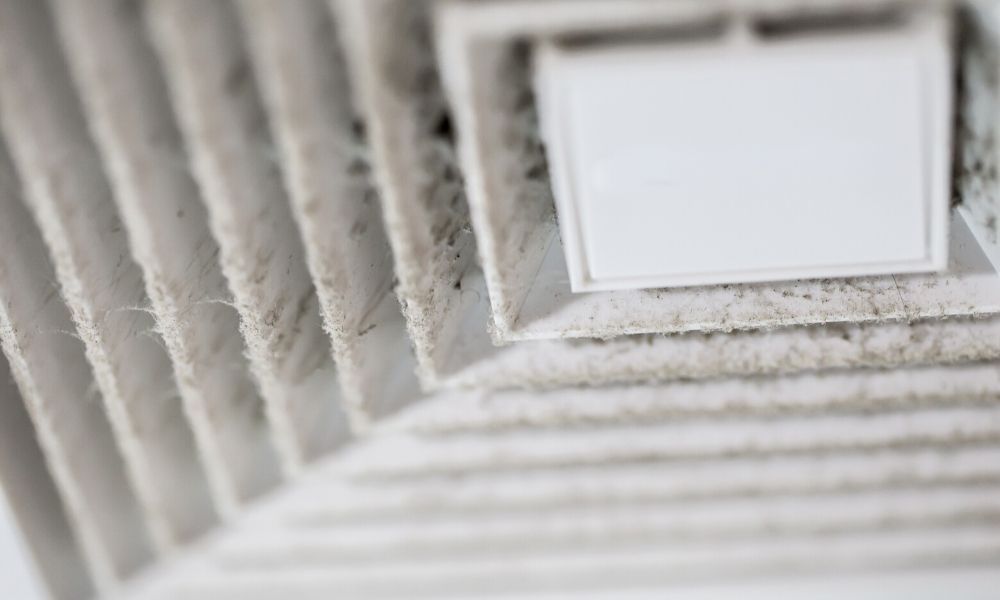Cooling system efficiency and comfort can be greatly improved by installing a ductless mini-split AC. However, proper system sizing and installation are crucial for maximizing their benefits.
Ductless systems do not require air ducts, which reduces upkeep and maintenance costs. They’re also less invasive to install, meaning they can be installed in homes with no existing ductwork. Contact a professional by clicking here at https://alltemprefrigerationfl.com/ to ensure it’s done right. This will help ensure a comfortable space while avoiding high energy bills.

Energy Efficiency
Ductless systems can replace inefficient window air conditioners, space heaters, and electric baseboard heating units. They are also an ideal fit for room additions, new construction, sunrooms, garage apartments, and other spaces that lack pre-existing ductwork. They can also be used to improve temperature control in homes with ducted central HVAC systems.
Compared to traditional HVAC systems, ductless systems are far less expensive and more efficient to operate. This is primarily because ductless systems don’t require a large amount of invasive ductwork to be installed in the home. This can save homeowners thousands of dollars and weeks of headaches.
Additionally, ductless systems are more energy-efficient because they distribute air more evenly than their ducted counterparts. This eliminates hot and cold spots in the home, which can make for a much more comfortable and relaxing atmosphere.
A ductless system is more cost-efficient than other HVAC systems because they don’t require a lot of invasive ductwork to be installed. This is particularly the case if you are looking to add a room to your home, such as a three-season porch or a remodeled garage. In these cases, you are adding a significant amount of square footage to your home, which can place a heavy load on your existing ductwork and cause the system to be under-sized for the size of your home. Using a ductless mini-split head is an ideal solution for this situation.
Many ductless systems feature built-in zoning capabilities that can be adjusted easily. This allows you to keep the air in one particular room cooler than another, or cooler and warmer at different times of the day. This will help you to avoid spending money on cooling or heating areas of the home that aren’t occupied and will reduce the amount of wear and tear on your system.
Because of their superior efficiency, many utility companies have begun to offer rebates and incentives to consumers who install ductless systems in their homes or businesses. However, someone stresses that it is important to work with an experienced A+ licensed contractor when installing a ductless system. He warns that attempting to install a ductless system yourself can be incredibly dangerous since improper installation can lead to the unit being the wrong size, the wall penetration not being properly sealed, and/or the sensitive electronics inside the unit not being handled according to guidelines.
Convenience
Ductless systems are incredibly convenient because they offer you the ability to create cooling zones. This is perfect for households where people prefer different temperatures. Rather than cooling the entire house to the same temperature, you can keep the bedrooms cool while turning up the thermostat in the living room and kitchen.
In addition, ductless systems are very efficient. Traditional air conditioners and heat pumps use ductwork to distribute air, which can leak, contributing up to 25% in energy loss. Because ductless mini-splits use refrigerant to cool the air, they don’t suffer from this same problem. A good ductless AC system with a STAR rating can save you money on energy costs.
Lastly, ductless systems are far less invasive to install than traditional ducted HVAC systems. The installers only need to drill a hole in the wall for a conduit that connects the indoor and outdoor units. This allows homeowners to add ductless heating and cooling to rooms of the home that previously only had window air conditioning or space heaters.
Ductless mini-splits are also great for adding new rooms to a home. They can be installed in garage apartments, sunrooms, and other new additions. They can even be used to improve temperature control in rooms that already have ductwork, such as home offices or media rooms.
Another benefit of ductless mini-splits is that they are easy to maintain. Unlike window air conditioners, which can trap dust and other contaminants, ductless systems have a cleanable filter that removes these contaminants from the air. Additionally, ductless air conditioning can be controlled with a simple remote or smart home app.
Ductless systems are also more effective than standard air conditioning in hot climates, as they offer a direct and powerful cooling system. They are also less expensive to run, as you don’t have to pay for supplemental heating. In addition, they can be used to supplement your current ductwork in older homes that don’t have adequate air circulation. However, it’s important to work with a licensed professional to ensure proper system sizing and installation. Otherwise, you could end up wasting money and voiding the warranty on your ductless system.
Aesthetics
Ductless systems aren’t just effective air conditioners; they’re also aesthetically pleasing. The sleek, compact units can be mounted on the wall or installed in the ceiling to stay out of the way. They’re far less invasive than the large pieces of ductwork needed to power traditional AC systems, which can cause weeks of construction mess and disruption.
With a ductless system, all you need is a three-inch hole in the wall to run the conduit that connects the indoor and outdoor units. The streamlined unit has a contemporary look that complements any home or commercial space.
Additionally, ductless systems use much less energy than their central AC counterparts because they can heat and cool specific zones in your house. They avoid heating and cooling unused rooms, which can waste energy and contribute to high utility bills.
If you have an old garage, basement, or three-season room that you’d like to turn into a livable space, a ductless system can help. A supplemental AC system will keep that new bedroom, living room, workout space, or media room comfortable without increasing the load on your existing central air system.
While conventional AC ducts can hide a multitude of contaminants like dust, mold, and pet dander, the ductless components of a ductless system are built to eliminate these issues. Rather than being hidden in a duct, the air handler is located on or above the ceiling and is kept clean thanks to heavy-duty filters.
Ductless systems are also designed to be quieter than other HVAC options. They operate at a sound level similar to the rustling of leaves or a whisper, making them a good choice for homes and workplaces where noise is a concern.
Unlike the traditional cooling and heating systems, which are built with a single seasonal energy efficiency ratio (SEER), most ductless models have multiple SEER ratings. This allows them to deliver the same amount of cooling or heat at a higher rate to ensure you always get the ideal comfort. The higher efficiency can also lead to reduced energy bills and a smaller carbon footprint for your home or commercial space.
Maintenance
Ductless systems offer a range of maintenance benefits. For example, there’s no need to close vents in seldom-used rooms. This can cause pressure imbalances and promote microbial growth. In contrast, a ductless system allows you to cool each room on demand.
Another benefit is the fact that ductless units are very easy to maintain. Air filters and the coil and condenser are simple to clean, and if you get in the habit of doing this weekly or biweekly, your unit will perform at its best all year round.
Because they don’t rely on combustible fuels, ductless mini-splits are also less expensive to operate than traditional HVAC systems. Plus, many utility companies offer rebates and other incentives to encourage homeowners to switch to a green cooling option.
The other reason to invest in a ductless system is its ease of installation. There aren’t a lot of components in a ductless system, and getting it up and running is as simple as connecting the outdoor unit to an indoor air-handling unit through a conduit that connects them. You can do this yourself if you’re handy. Just make sure you’re competent at handling sensitive electronics and following regulations for handling refrigerants.
A ductless system is also ideal for new additions to the home, such as a garage apartment, or sunroom. The addition will be properly sized for the space, and you won’t have to worry about it overtaxing your existing ductwork. In addition, a ductless system is perfect for converting an old three-season room into a livable space.
Finally, a ductless system is the perfect choice for a man cave. Not only will it keep the space comfortable, but you won’t have to worry about the noise disturbing your movie night or phone call. In addition, the ductless unit will be able to handle the heat and humidity that a cigar lounge might produce. The key is to install a system that’s sized correctly for the room, and it should be properly insulated.
